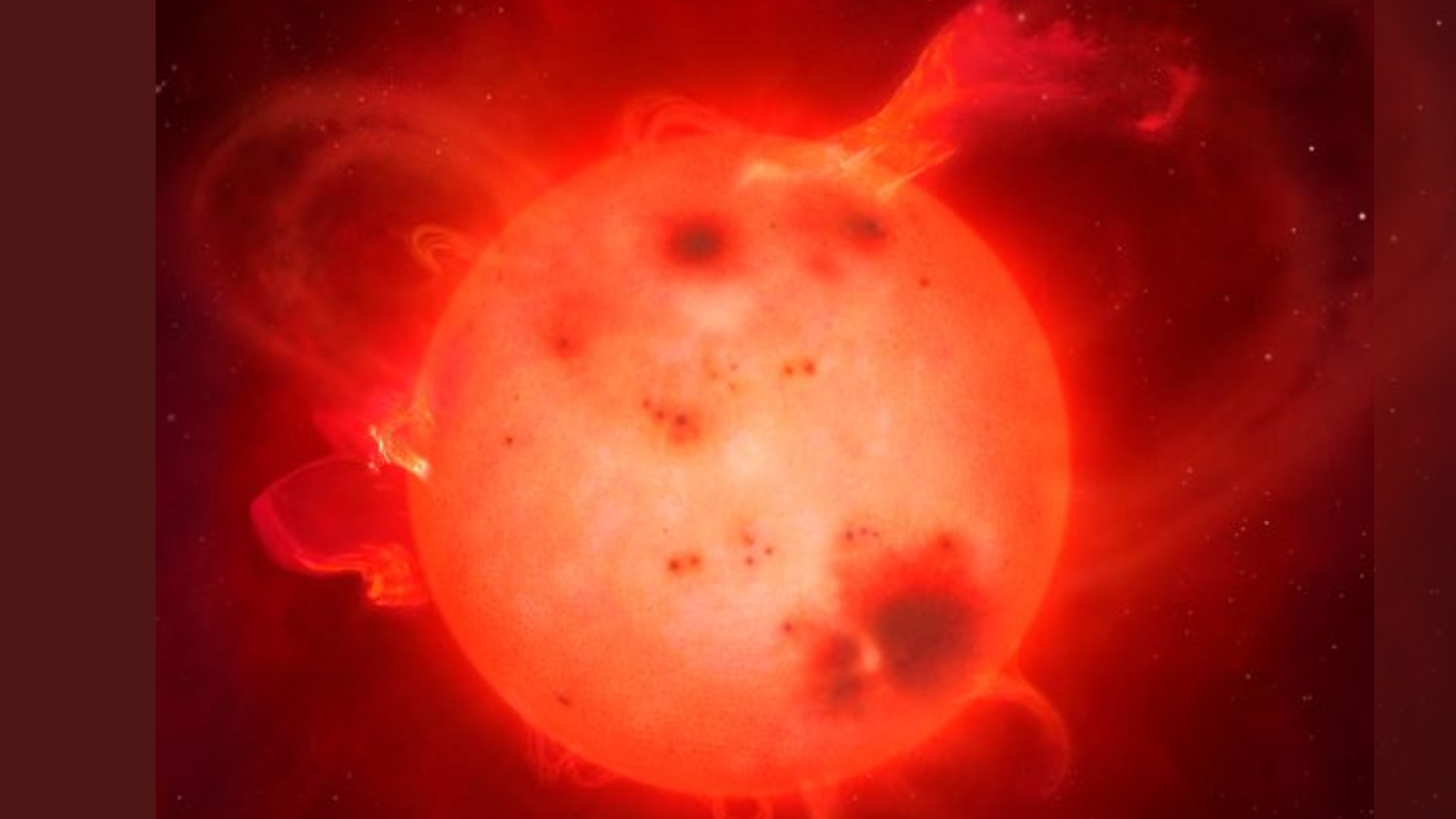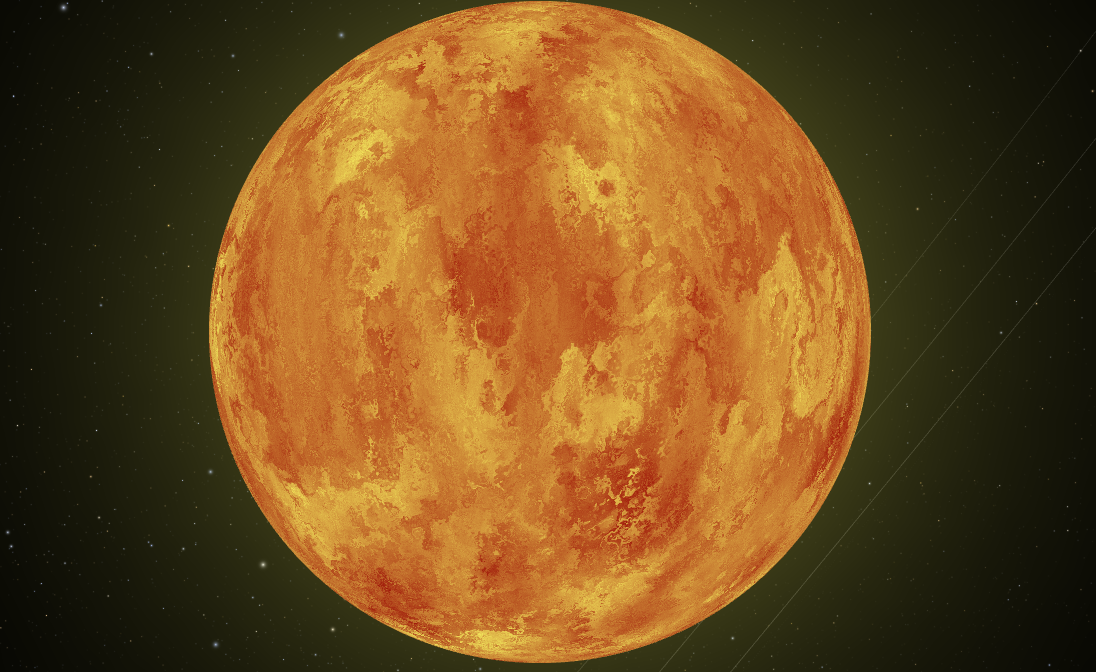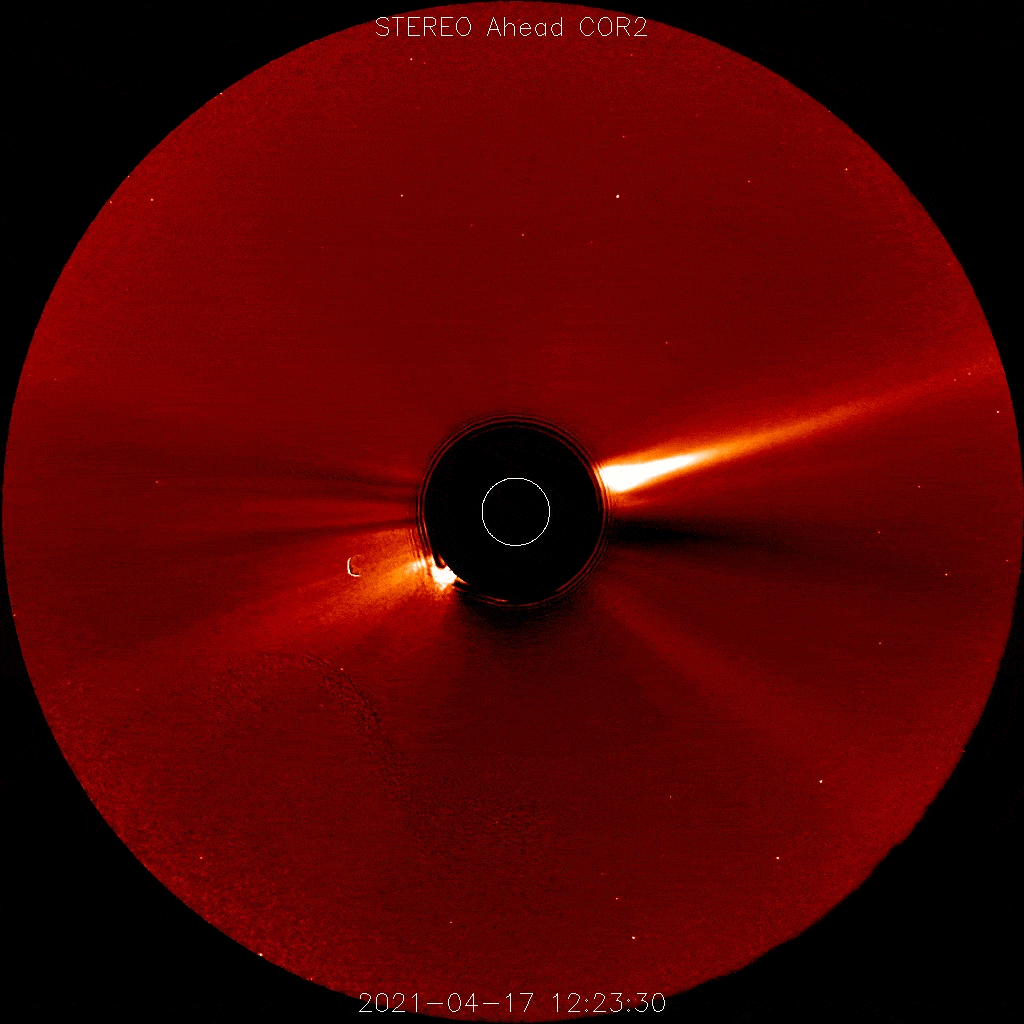Stellar detectives find suspect for incredibly powerful 'superflares'
Some stars erupt with 'superflares' 10,000 times as powerful as solar flares from the sun. Scientists may now know why.

Our sun is known for its occasional outburst of energy called a solar flare, which can trigger space weather capable of disrupting communications and power infrastructure here on Earth.
But we should really be grateful that we doesn't exist around a star that erupts with so-called "superflares" that can be 100 to 10,000 times more energetic than even the most powerful solar flares. A superflare emerging from the sun could potentially be catastrophic for the Earth, delivering serious damage to our planet's atmosphere and to the lifeforms that depend upon it. Fortunately, superflares are seen around stars so far away that they are mere points of light in the sky from our perspective.
These energetic flares appear to astronomers as a sudden and extreme brightening of those distant specks, and this has led scientists to play stellar detective on a quest to discover why some stars erupt so violently.
Related: Scientists study violent 'superflares' on stars thousands of times brighter than the sun
And now, a team of researchers from the Mackenzie Center for Radio Astronomy and Astrophysics at Mackenzie Presbyterian University in Brazil and the University of Glasgow's School of Physics and Astronomy in the U.K. have set about looking at the two leading suspects thought to be responsible for these superflares.
To do this, they analyzed 37 superflares seen in the binary star system Kepler-411 as well as a further five coming from the star Kepler-396.

Interrogating two superflare suspects
A stellar flare is thought to erupt when magnetic energy built up in the atmosphere of a star is suddenly released as a result of magnetic field lines "snapping" and "reconnecting." This is presumably true for any type of stellar flare. So, despite the fact that there are power differences when it comes to solar flares from the sun and stellar flares from elsewhere in the cosmos, the study team was able to use the mechanism that launches flares from our star to assess distant, more energetic flares.
The researchers were also able to apply the vast amount of data collected regarding solar flares since they were first described in scientific literature by astronomers Richard Carrington and Richard Hodgson, who independently observed the same solar flare on September 1, 1859.
Get the Space.com Newsletter
Breaking space news, the latest updates on rocket launches, skywatching events and more!
"Since then, solar flares have been observed with intense brightness lasting seconds to hours and at different wavelengths, from radio waves and visible light to ultraviolet and X-rays," Alexandre Araújo, study team member and a Ph.D. candidate at the Mackenzie Center for Radio Astronomy, said in a statement.
The team also had data about stellar flares from observations of other stars made by observatories designed to look for signs of orbiting planets, like the Kepler Space Telescope and the Transiting Exoplanet Survey Satellite (TESS).

The "usual suspect" model for these violent superflares sees the radiation from an outbursts treated as a "blackbody emission," referring to electromagnetic radiation that is in equilibrium with its surroundings. Such emissions also cover a wide spectrum of wavelengths and are dependent on the emitting body's temperature. The "blackbody emission," in the case of the studied superflares, would have a temperature of around 17,500 degrees Fahrenheit (9,700 degrees Celsius).
Yet, there is another outside suspect that can't be ruled out. This alternative model sees superflares generated as the result of hydrogen atoms being stripped of electrons, aka getting "ionized," then recombining with these electrons to form neutral hydrogen atoms once again. It is this outside model that the team's analysis favors as the explanation for superflares.
"Given the known processes of energy transfer in flares, we argue that the hydrogen recombination model is physically more plausible than the blackbody model to explain the origin of the broadband optical emission from flares," Paulo Simões, a professor at Mackenzie Presbyterian University who led the new study, said in a statement. "We concluded that estimates for total flare energy based on the hydrogen recombination model are about an order of magnitude lower than the values obtained using the blackbody radiation model and are a better fit to the known flare processes."
Simões added that the limitation of the first and more popular blackbody model relates to energy transport. There's a certain amount of energy required to exist on a star's photosphere to ensure plasma in the region is heated up enough to lead to extreme brightening associated with superflares. Yet, none of the energy transport mechanisms normally accepted for solar flares have the capability to explain how this kind of energy level and distribution can be achieved.
"Calculations first performed in the 1970s and later confirmed by computer simulations show that most of the electrons accelerated in solar flares fail to cross the chromosphere [the sun's outer atmosphere] and enter the photosphere," Araújo said. "The blackbody model as an explanation of white light in solar flares is therefore incompatible with the main energy transport process accepted for solar flares."
The team argues that the hydrogen recombination radiation model, on the other hand, is more consistent from a physical standpoint. The team conceded that the unfortunate aspect of all this, however, is the hydrogen reconnection model and its connection to superflares can't yet be confirmed by observations.
Still, the researchers conclude that their research, at the very least, provides a strong argument in favor of the hydrogen reconnection model, which they say has been neglected in most superflare studies thus far.
The team's research was published earlier this year in the journal The Monthly Notices of the Royal Astronomical Society.
Join our Space Forums to keep talking space on the latest missions, night sky and more! And if you have a news tip, correction or comment, let us know at: community@space.com.

Robert Lea is a science journalist in the U.K. whose articles have been published in Physics World, New Scientist, Astronomy Magazine, All About Space, Newsweek and ZME Science. He also writes about science communication for Elsevier and the European Journal of Physics. Rob holds a bachelor of science degree in physics and astronomy from the U.K.’s Open University. Follow him on Twitter @sciencef1rst.









